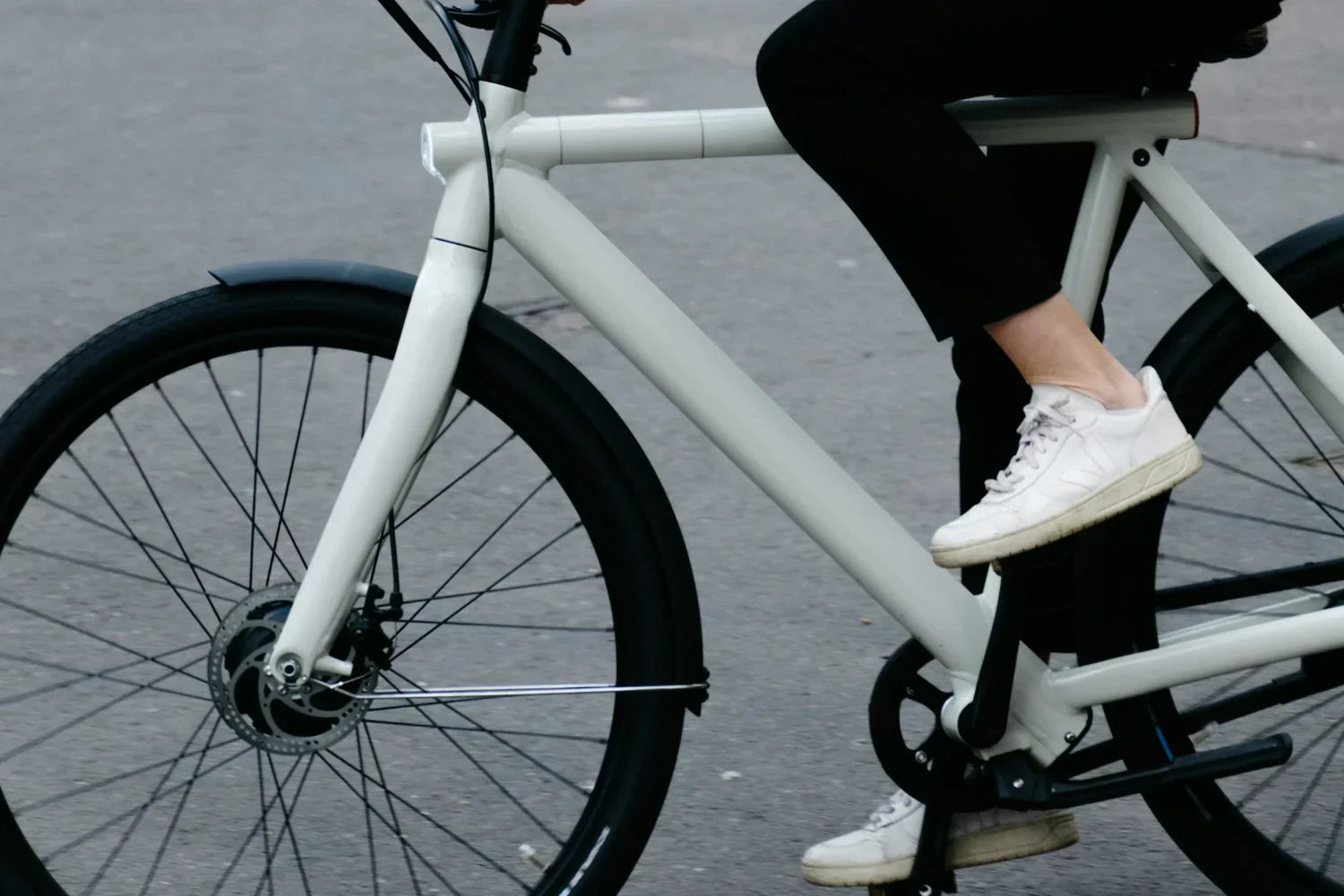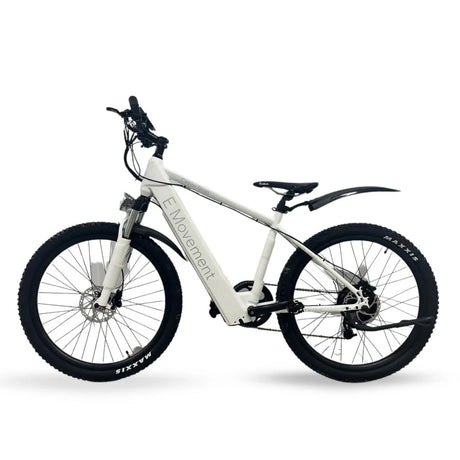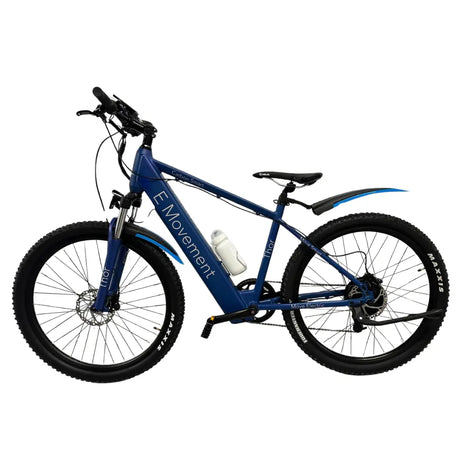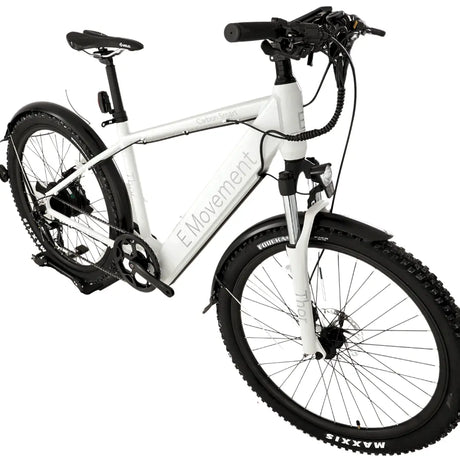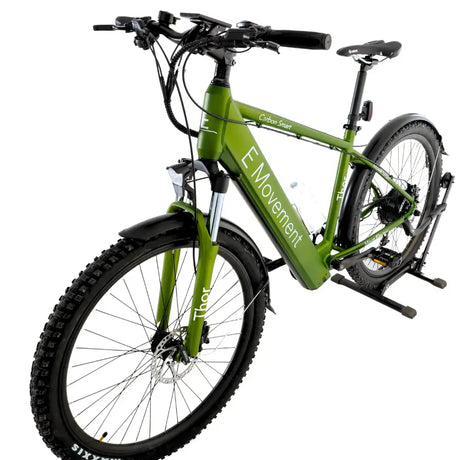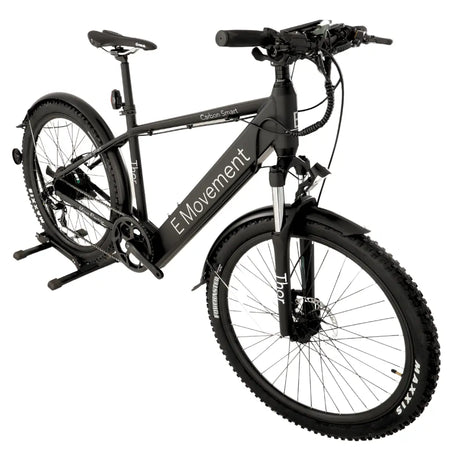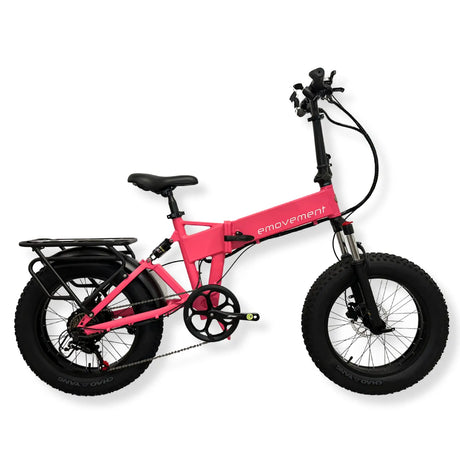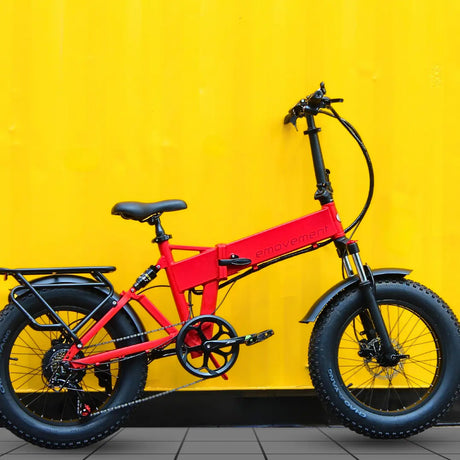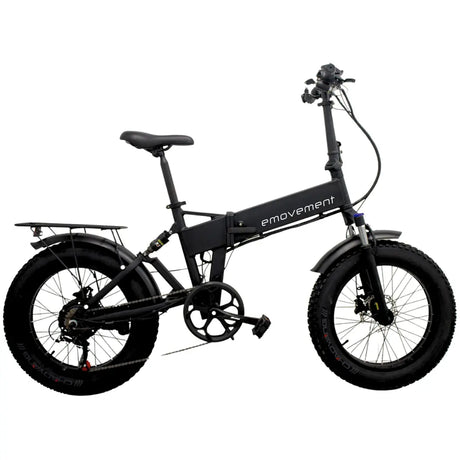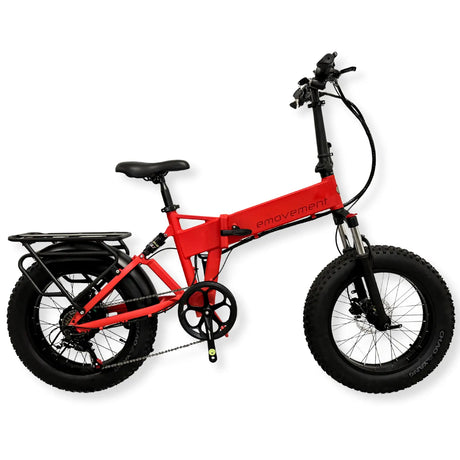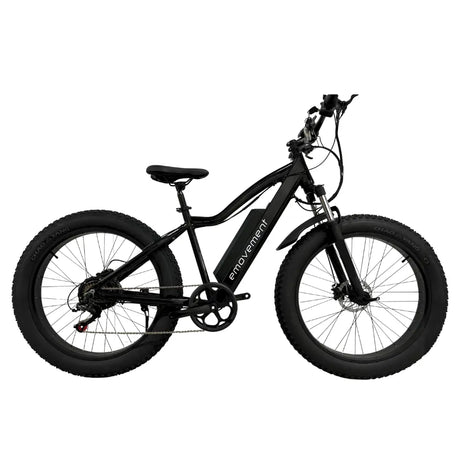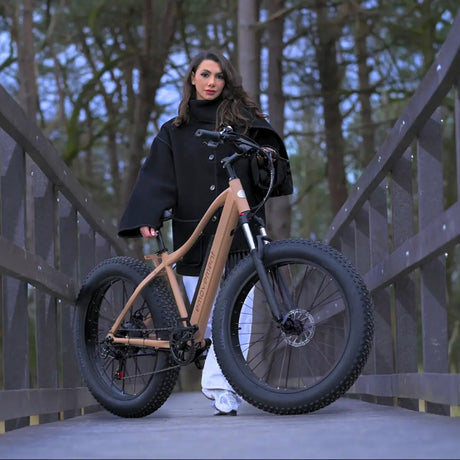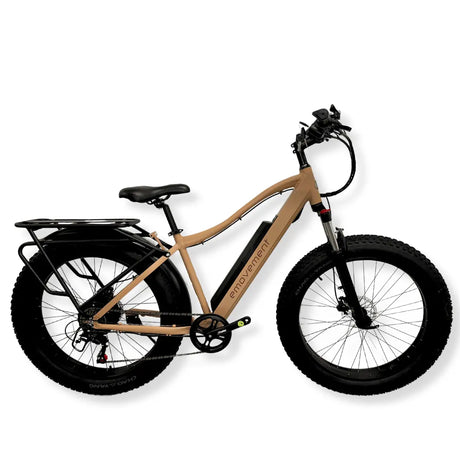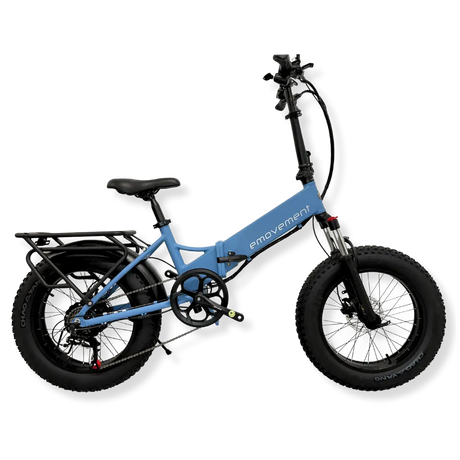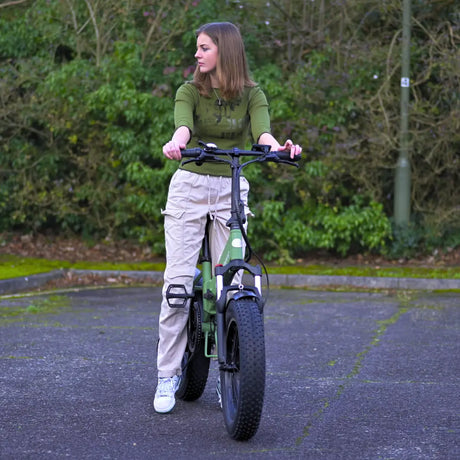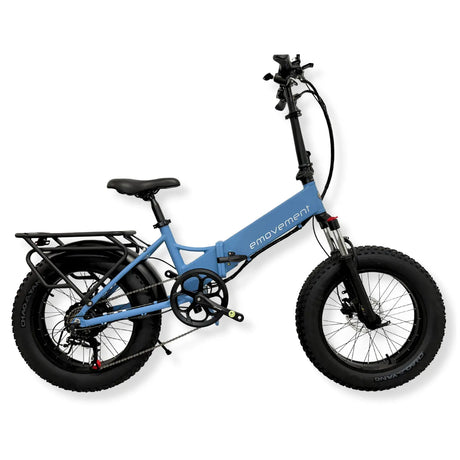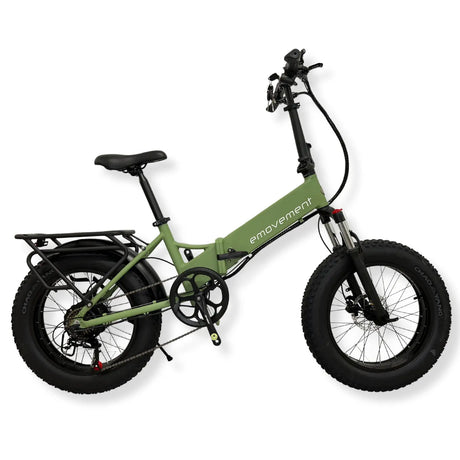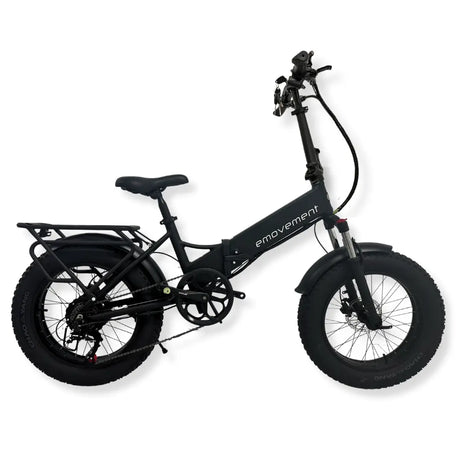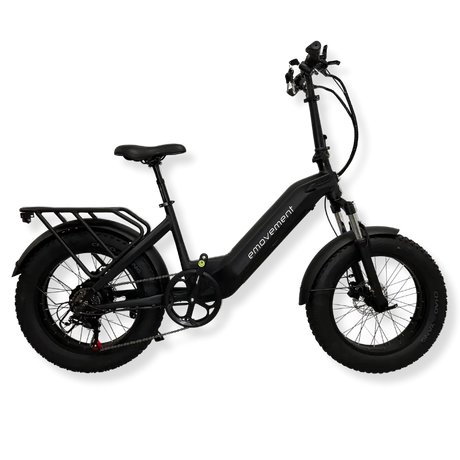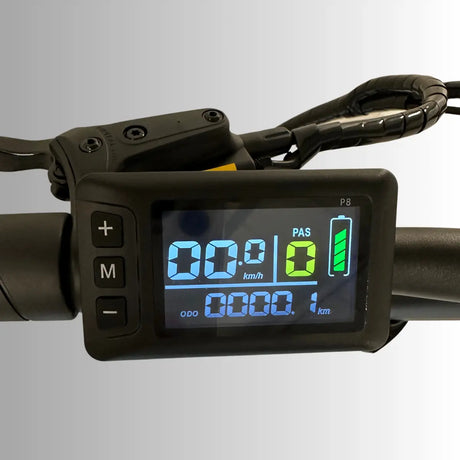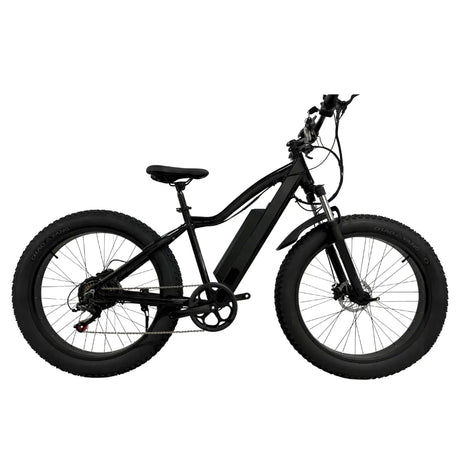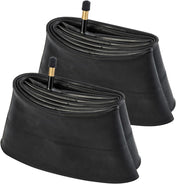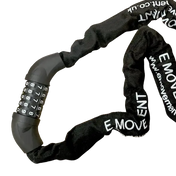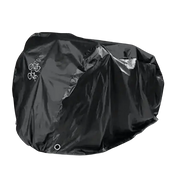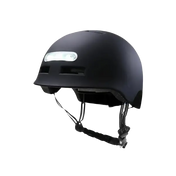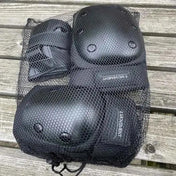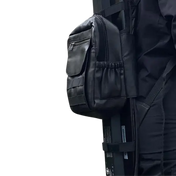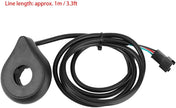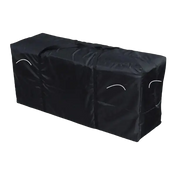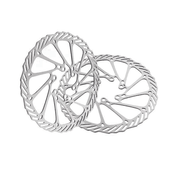With the increasing popularity of electric bikes, riders are faced with the challenge of optimising their biking experience through technology. At the heart of this technological revolution are pedal assist sensors: cadence and torque sensors. These are fundamental in transforming how the bike responds to your pedalling efforts, ultimately affecting everything from speed to comfort.
Keep reading as we dive into the nuances of cadence sensor vs torque sensor debate to help you find the best fit for your electrifying adventures.
Why Do Electric Bikes Need Sensors?
Sensors are crucial for e-bikes because of their ability to facilitate a smooth blend of pedal power and motor assistance. By measuring the rider’s pedalling force and speed, sensors direct the motor to deliver just the right amount of power needed for various cycling conditions. The power provided conserves battery life, extends the bike’s range, and boosts efficiency. Whether it's aiding with a consistent pace up a challenging hill or providing a quick surge to cross busy streets, sensors customise the bike's performance to your immediate requirements and make cycling appealing to a broad range of people.
Cadence Sensors
Cadence sensors work by monitoring your pedalling rate and determining how much assistance the e-bike motor should provide. Focused primarily on pedal stroke frequency rather than intensity, they allow the motor to activate at consistent intervals. With steady support, you can not only maintain an even speed but also reduce the physical effort required for more enjoyable rides. The constant feedback loop provided by cadence sensors ensures that the bike's assistance is both smooth and predictable.
The Science Behind How Cadence Sensors Work
Such sensors operate through a simple yet effective mechanism; they track the rotations of the electric bike’s crank arm or pedal. A small magnet fixed on the crank passes a sensor with each turn to trigger a pulse. These pulses, calculated in revolutions per minute (RPM), provide real-time data on pedalling activity. Armed with this information, the e-bike controller adjusts the motor output to align with your pedalling pace, ensuring a smooth and efficient ride tailored to your current activity level. Additionally, this mechanism enables immediate motor engagement that helps riders tackle inclines or start from a stop with ease.
Advantages of Cadence Sensors
Let’s now consider some key benefits of cadence sensors:
- Cadence sensors provide uniform motor assistance, which is ideal for maintaining a steady speed on flat terrains or during leisurely rides with road electric bikes. If you prefer a predictable and easy-to-manage assistance level, opt for a cadence sensor.
- Cadence sensors are generally affordable and offer a lower entry point for those new to electric bikes. Their affordability makes them an attractive option for budget-conscious consumers.
- These sensors are straightforward to install on all types of ebikes, making them a favourite among DIY enthusiasts and entry-level users. The ease of installation also reduces the overall cost of ownership.
- With fewer moving parts and a simple design, cadence sensors require minimal upkeep. This adds to their longevity, making them particularly appealing for daily commuting and casual riding.
Limitations of Cadence Sensors
While cadence sensors are beneficial, they come with certain drawbacks that may affect the ride quality for some users:
- The binary nature of their functioning can sometimes result in sudden, unexpected power surges and bursts of speed. These may make the bike feel uncontrollable at crucial moments, which can be jarring.
- Cadence sensors only detect pedal speed, not force, leading to less intuitive power assistance on varying terrains. Consequently, climbs and more technical rides feel more challenging.
- There may be a noticeably delayed response before the motor engages. This can be particularly frustrating in stop-and-go urban traffic.
- Due to their basic operation, cadence sensors do not offer advanced customisation options for adapting to different riding styles or conditions. Riders seeking a more tailored biking experience may find this limitation restrictive.
Torque Sensors
Torque sensors refine the e-bike experience by dynamically adjusting motor assistance based on the rider's physical input. They improve the responsiveness of electric bikes by measuring the actual force a rider applies to the pedal to offer more nuanced and reactive cycling experience. Their functionality allows the motor to deliver power proportionally to the effort exerted, offering a ride that feels more natural and akin to traditional cycling.
The Science Behind How Torque Sensors Work
Torque sensors operate by detecting the strain or torsion on the bike’s crankshaft or pedals as the rider pushes against them. When a rider applies force to the pedals, this strain is converted into an electrical signal by the sensor. The signal is then processed by the e-bicycle's control unit to determine the appropriate amount of applied motor assistance. Torque sensors ensure that the bike’s assistance feels intuitive and smooth by directly correlating the motor output with the rider’s pedal force. You can enjoy improved ride quality and efficient power use that adapts instantaneously to any terrain’s changing demands.
Advantages of Torque Sensors
Here are some benefits to help you decide whether to integrate a torque sensor into your electric bike:
- The sensor’s ability to instantly react to changes in pedal force helps the motor provide immediate assistance exactly when required, which is particularly useful for sudden accelerations or climbing hills on off-road e-bikes.
- Torque sensors offer a more natural bike riding experience. This makes the bike feel more like a traditional cycle that just requires lesser effort per stroke.
- By enabling precise control, these sensors improve the e-bike’s energy efficiency for longer battery life and extended range.
- Torque sensors adapt to different terrains quickly. Whether cruising on flat roads or climbing steep inclines, torque sensors adjust the motor's output to suit the specific demands of the terrain.
Disadvantages of Torque Sensors
Despite their advanced technology, torque sensors also come with certain disadvantages that might affect certain aspects of electric bicycle usage:
- They are typically more expensive than cadence sensors, increasing overall bike cost. If you’re a budget-conscious buyer, a torque sensor might not be the best option.
- Due to their sophisticated technology, torque sensors can be more complex to install and maintain. You may require professional servicing, which adds to long-term maintenance costs. They can typically only be installed with mid-drive motors, not on hub ones.
- This sensor type can sometimes be overly sensitive to extreme conditions and deliver inconsistent motor behaviour, such as on very steep hills or very rough terrain.
- The additional components and technology required for such sensors may add weight and complexity to the e-bike, potentially affecting handling and the simplicity of use.
Cadence Sensor vs Torque Sensor
Analysing the electric bike cadence sensor vs torque sensor discussion reveals critical differences that can significantly influence your riding experience:
Key Differences
In this section, we’ll consider what sets these two sensors apart:
1. Sensitivity and Responsiveness
Cadence sensors activate the motor based on pedalling frequency, providing consistent but sometimes unresponsive assistance. As a result, they lack nuance in providing power since the pedal stroke is not accounted for. Torque sensors, on the other hand, offer precise control by measuring how much force the rider exerts. This leads to more responsive and intuitive assistance that adjusts in real time to the rider’s effort. For those who need immediate adaptation to their pedalling strength, integrating the latter into your e-bike is the way to go.
2. Installation and Maintenance
While torque sensors involve a more complex setup that typically requires professional maintenance, cadence sensors are simpler to install and maintain. Also, remember that torque sensors can often only be installed on mid-drive motors.
We recommend cadence sensors for entry-level electric bike riders who prefer straightforward technology. The higher complexity of torque sensors can be a deterrent for individuals not familiar with frequent bike maintenance or those without easy access to professional service.
Power Efficiency
Efficiency varies significantly between the two. Cadence sensors may lead to greater energy use as they do not adjust the motor's power output based on the rider's force. Torque sensors optimise energy usage by adapting the motor’s assistance to match the physical effort, which can enhance battery performance and extend the bike’s range. This responsiveness ensures that torque sensors help preserve battery life over longer rides, making them more suitable for serious cyclists or longer commutes.
Cost Considerations
From a cost perspective, cadence sensors are generally more affordable if you’re on a budget. Torque sensors are more expensive but offer better potential savings on energy use. However, as they are only installed in mid-drive systems, and mid-drive motors and installation are already pretty complex and expensive, the overall cost of the electric bike goes up significantly.
Use Cases for Cadence Sensors
This type of sensor is well-suited for various cycling scenarios, particularly where consistent, automatic pedalling support is favourable:
- Commuting: They are ideal for urban riders who need a straightforward no-nonsense electric bike with a steady assist level to navigate stop-and-go traffic and maintain a consistent pace across relatively flat city landscapes.
- Recreational Riding: Cadence sensors are perfect for leisure rides where maintaining a set pace without physical strain is more important than changing power levels.
- Fitness: If you use your electric bike for exercise with a focus on cardiovascular health, these sensors help maintain a steady effort level that enables riders to focus on endurance rather than intense bursts of power.
- Beginner Cyclists: New riders benefit from the simplicity of cadence sensors, which do not require any special technique to engage the motor.
Use Cases for Torque Sensors
Torque sensors, with their responsive and dynamic power adjustments, cater to more demanding or specific cycling needs:
- Mountain Biking: Such sensors are essential for off-road cycling where varying degrees of pedal force need immediate motor response. They help navigate challenging terrains like steep inclines and rugged paths.
- Sport and Advanced Training: Ideal for experienced cyclists and athletes that require their e-bike to respond precisely to their pedalling force for better training outcomes and performance.
- Long-Distance Tours: Long-distance riders can benefit from torque sensors, especially those who face different terrain and need the bike to adjust assistance based on continuous changes in exertion and slope.
- Commuting in Hilly Areas: For individuals riding mountain electric bikes in hilly or rugged terrain, torque sensors provide a more natural ride feel. By adjusting power output based on how hard the rider pedals, they deliver efficient energy usage and comfort on long uphill routes.
User Experience
Understanding the torque sensor vs cadence sensor can greatly influence the satisfaction and efficiency of your ride:
Riding Experience with Cadence Sensors
Many riders appreciate the simplicity and ease of use offered by cadence sensors, especially those new to cycling or preferring straightforward biking experiences. Users often describe the ride as smooth and consistent, which is ideal for urban commuting and leisurely cycling on flat terrains. The predictability of maintaining a steady pace with minimal adjustments is frequently highlighted
Riding Experience with Torque Sensors
This type of sensor is lauded by cyclists for its dynamic, smooth, and intuitive riding experience. Riders frequently note how torque sensors improve their ability to tackle varied terrains, from steep inclines to rugged trails. They provide immediate feedback and adjustments to pedal pressure. Users seeking a more performance-oriented experience akin to traditional cycling find torque sensors especially rewarding because they closely mimic the natural feel of biking without assistance.
Choosing the Right Sensor
Reflect on your typical riding scenarios. Do you need smooth and consistent assistance for commutes, or do you prefer responsive power for various terrains and rigorous rides? Cadence sensors do just fine for everyday riding whereas torque sensors are more beneficial for sports ventures and off-road ventures.
Think about the initial purchase price and the potential long-term costs associated with each sensor type. While torque sensors might have a higher upfront cost, their efficiency and responsiveness could translate to lower energy costs and enhanced riding that might make the extra expense worth it.
If possible, arrange for test rides on electric bikes equipped with both types of sensors. Experiencing how each sensor type reacts to your pedalling in real-time can be incredibly insightful and may be the decisive factor in your decision-making process. At emovement, we use cadence sensors in our electric bikes as our customer base is usually people who are looking for cycles to commute. You can book a free test ride by contacting us.
Conclusion
When it comes to e-bikes, understanding torque vs cadence sensors is crucial for tailoring your riding experience. Cadence sensors, valued for their simplicity and cost-effectiveness, provide consistent assistance ideal for casual rides and flat commutes. Torque sensors, on the other hand, offer dynamic, responsive motor support that adapts to your pedalling force. They are perfect for challenging terrains and performance-focused cyclists. Choosing the right sensor depends on your riding style, budget, and the specific needs you have from your bike..
Frequently Asked Questions
What is the main difference between a cadence sensor and a torque sensor?
The main difference lies in how they measure rider input to control motor assistance. A cadence sensor detects the speed at which the pedals are turning, providing consistent motor support based on pedal frequency. In contrast, a torque sensor measures the actual force applied by the rider on the pedals, offering motor assistance that dynamically adjusts to the pedalling force.
Which is better, a torque or cadence sensor?
Generally, torque sensors are more responsive and power-efficient than cadence sensors, but they are pricey. For regular everyday commutes, cadence sensors work pretty fine too, so you do not need to spend more unless you’re buying a bike for off-roading or very long commutes. Torque sensors might be better for those who enjoy a more active and variable ride, while cadence sensors could be more suitable for riders looking for simplicity and consistent assistance.
Which sensor is better for hilly terrain?
A torque sensor is generally better for hilly terrain as it adjusts the motor's power output in direct response to the force exerted by the rider. This makes it easier to tackle varying inclines and provides a smoother, more controlled ascent.
Can I switch from a cadence sensor to a torque sensor on my existing e-bike?
Switching from a cadence sensor to a torque sensor is possible but can be complex and costly, requiring significant modifications to the bike’s drive system and electronics. It's important to consult with a professional to determine if your electric bike’s model can accommodate this switch and what it would entail.
How do I know which sensor my e-bike has?
You can typically determine the type of sensor your bike has by checking the user manual or manufacturer’s specifications. Alternatively, observing how the motor responds during riding may also indicate the sensor type. If motor assistance kicks in at a constant level regardless of how hard you pedal, it's likely a cadence sensor. In the case that the assistance varies with pedal pressure, it's likely a torque sensor.

